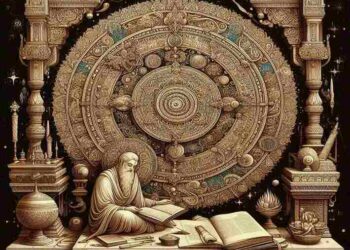Introduction
The Rise Of Modernism: How English Literature Transformed English literature underwent a dramatic transformation around the turn of the 20th century. As a result of the world’s profound political and social changes, writers’ approaches to language, subjects, and storytelling also drastically changed.
Known as Modernism, this period was marked by innovation, a departure from tradition, and a significant change in viewpoint. Rapid changes in the modern world, such as industrialization, war, the emergence of urban life, and significant changes in social, cultural, and philosophical perspectives, gave rise to modernism.
Literature changed when the Victorian era gave way to the modern one, moving away from the strict morality and forms of the past and toward the disjointed, reflective, and frequently disillusioned stories that are associated with modernist works. The Modernist movement in English literature produced new forms, ideas, and stylistic changes that profoundly and permanently broke with the past, from the writings of Virginia Woolf and James Joyce to T.S. Eliot and Ezra Pound. This article looks at the major authors and works that influenced Modernism and how it changed English literature.
1. Understanding Modernism: The Context of Change
The profound social, political, and cultural shifts that paved the way for Modernism must be taken into account before we can comprehend the movement’s ascent. Europe and the rest of the world saw tremendous upheaval in the late 19th and early 20th century. Large metropolitan centers and a new industrial working class were two effects of the Industrial Revolution that drastically changed Europe’s environment. Rural, agrarian society’s old certainties were quickly disappearing.
Meanwhile, the First World War (1914-1918) devastated Europe, leaving millions dead and countless others physically and psychologically scarred. The war shattered not only physical landscapes but also people’s perceptions of progress, heroism, and civilization. The horrors of trench warfare and the unprecedented scale of the conflict forced writers to question traditional values, morality, and the purpose of art itself.
In addition to these political and social changes, scientific advancements, such as Freud’s theories of the unconscious and Einstein’s theory of relativity, helped challenge older perceptions of reality and the self. Philosophically, thinkers like Friedrich Nietzsche questioned the very foundation of truth, morality, and meaning, and Marxism proposed radical new ideas about class and society.
These factors, combined with a growing sense of alienation and disillusionment, led to a cultural moment that rejected the previous certainties of the Victorian era. Traditional ways of understanding the world were no longer adequate, and a new generation of writers sought to break away from the conventions of the past.
Read more
2. Characteristics of Modernism in English Literature
The Rise Of Modernism: How English Literature Transformed At its core, Modernism in literature was about innovation, experimentation, and a rejection of established norms. Below are some of the defining characteristics that emerged in English literature during the Modernist period:
A. Fragmentation of Narrative and Form
One of the most distinctive features of Modernist literature is the fragmented structure. Writers often abandoned linear, chronological storytelling in favor of more disjointed, fragmented forms that better reflected the fractured experience of the modern world. This was evident in works like James Joyce’s Ulysses, where the narrative structure mimics the fragmented nature of thought and memory. Characters’ inner lives are portrayed in a series of fragmented perceptions, disrupting traditional storytelling.
B. Stream of Consciousness
Modernist writers often employed a technique called stream of consciousness, a method that allows readers to experience a character’s thoughts and perceptions as they occur in real time, often without conventional punctuation or structure. This technique is particularly associated with writers such as Virginia Woolf and William Faulkner. In Woolf’s Mrs. Dalloway or Joyce’s Ulysses, the boundaries between time, thought, and perception collapse, creating a sense of immediacy and subjectivity.
C. Emphasis on the Subjective Experience
The Rise Of Modernism: How English Literature TransformedModernist literature often focused on the inner lives of characters rather than external events. This shift toward the psychological and subjective experience was deeply influenced by Freud’s psychoanalysis, which introduced new ways of thinking about the unconscious mind, dreams, and repressed desires.
Modernist authors explored the complexities of the human mind, often delving into characters’ emotions, memories, and subconscious desires. Writers like D.H. Lawrence and Katherine Mansfield captured the subtle intricacies of relationships, inner turmoil, and personal growth.
D. Experimentation with Language and Style
In contrast to the clear, polished prose of earlier literary traditions, Modernist writers experimented with language in innovative and challenging ways. T.S. Eliot’s The Waste Land, for example, combines multiple languages, references, and literary styles, creating a dense, multi-layered text that demands active engagement from the reader. This experimentation with language reflected the Modernists’ desire to capture the complexity and multiplicity of the modern experience.
E. Alienation and Disillusionment
The horrors of war, the rise of industrial society, and the breakdown of traditional values led many Modernist writers to explore themes of alienation, isolation, and disillusionment. Characters in Modernist works often feel estranged from society, from themselves, and from their past. T.S. Eliot’s “The Love Song of J. Alfred Prufrock” captures this sense of existential disillusionment through the persona of Prufrock, a man paralyzed by self-doubt and uncertainty.
F. The Search for Meaning
The Rise Of Modernism: How English Literature Transformed Many Modernist works grapple with questions of meaning, often in a world that seems devoid of traditional structures or certainties. Authors like Samuel Beckett and Eliot often depicted characters struggling to find meaning in a fragmented, chaotic world.
This sense of uncertainty and existential questioning can be seen in works like Waiting for Godot, where two characters wait for someone (Godot) who may never arrive, symbolizing the human search for meaning in an indifferent universe.

3. Key Figures in Modernist English Literature
Modernism in English literature was shaped by a wide variety of writers, each of whom contributed unique elements to the movement. Below are some of the most influential figures:
A. James Joyce
The Rise Of Modernism: How English Literature Transformed Perhaps the most famous Modernist writer, James Joyce is best known for his groundbreaking work Ulysses (1922), which revolutionized narrative techniques and the portrayal of consciousness.
In Ulysses, Joyce employs stream-of-consciousness techniques to depict the inner thoughts of his characters over the course of a single day in Dublin. His work challenges traditional narrative structures and engages with a range of literary references, making it one of the most complex and influential texts of the 20th century.
B. Virginia Woolf
A leading figure in the Bloomsbury Group, Virginia Woolf is renowned for her use of stream of consciousness and her exploration of the inner workings of the mind. In works such as Mrs. Dalloway (1925) and To the Lighthouse (1927), Woolf captures the subtleties of human experience, from the fleeting thoughts of characters to the complexity of time and memory. Her novels often feature strong, independent female characters and explore themes of identity, gender, and personal growth.
C. T.S. Eliot
T.S. Eliot is one of the most important Modernist poets, known for his innovative use of language and his exploration of themes such as alienation, fragmentation, and despair. His 1922 poem The Waste Land is often considered the quintessential Modernist text. This complex, allusion-heavy poem reflects the disillusionment of the post-World War I world and critiques the moral and spiritual decay of contemporary society. His other famous works, such as The Love Song of J. Alfred Prufrock (1915), explore the theme of alienation and the individual’s search for meaning.
Read more
D. Ezra Pound
The Rise Of Modernism: How English Literature Transformed A key figure in the development of Modernist poetry, Ezra Pound was an advocate for free verse and helped promote the works of other Modernist writers.
His poetry, such as The Cantos, experimented with form, language, and reference, drawing on a wide array of historical and cultural sources. Pound’s work challenged traditional poetic structures and reflected his interest in shaping modern art to reflect the complexities of the contemporary world.
E. D.H. Lawrence
The Rise Of Modernism: How English Literature Transformed Known for his frank exploration of human sexuality and his critique of industrial society, D.H. Lawrence was a significant voice in the Modernist movement. His novels, such as Sons and Lovers (1913) and Women in Love (1920), examine the dynamics of relationships, the tensions between modernity and nature, and the psychological complexities of human desire.
4. The Impact of Modernism on Society and Literature
Modernism did not just transform literature—it influenced a wide range of artistic and intellectual movements, from visual art and architecture to philosophy and psychology. The avant-garde movements in art, such as Cubism and Surrealism, shared many of the same concerns and stylistic innovations as Modernist writers. In the world of cinema, directors like Orson Welles and Federico Fellini explored similar themes of alienation, fragmentation, and the breakdown of traditional narrative structures.
Philosophically, Modernism was linked to existentialism, a movement that focused on the individual’s experience in a seemingly indifferent or meaningless world. Thinkers like Jean-Paul Sartre and Martin Heidegger contributed to the broader intellectual climate in which Modernism developed.

Conclusion
The Rise Of Modernism: How English Literature Transformed The significant shifts of the early 20th century prompted the emergence of Modernism. As the world changed due to social upheaval, war, and technology, authors looked for fresh methods to depict the complexity of the human condition.
New narrative approaches and perspectives on reality and consciousness were made possible by modernist literature’s emphasis on alienation, fragmentation, and the dismantling of conventional structures.
From Virginia Woolf’s inventive stream-of-consciousness novels to T.S. Eliot’s rich, allusive poetry, Modernist authors permanently changed the face of English literature. Their writings still have an impact on present writers and are essential to comprehending the intellectual and cultural trends of the day.
Read more
FAQ
1. What are the key themes of Modernist literature?
Modernist literature explores themes such as alienation, disillusionment, fragmentation, the search for meaning, and the rejection of traditional social and moral structures. Writers grappled with the complexities of modern life, including the impact of war, industrialization, and the breakdown of established values.
2. What writing techniques define Modernist literature?
Modernist writers experimented with techniques such as stream-of-consciousness, fragmented narrative structures, and non-linear storytelling. They often employed ambiguity, symbolism, and allusion, challenging readers to engage with the text more actively.
3. How did World War I influence Modernist writers?
World War I had a profound impact on Modernist literature, leading to a sense of disillusionment and despair. The horrors of the war and the collapse of previous ideals prompted writers to explore the themes of alienation, trauma, and moral decay, which are central to Modernist works.
4. How is Modernism different from Romanticism and Victorian literature?
Unlike Romanticism, which emphasized emotion, nature, and the sublime, Modernism rejected idealism and focused on the fragmentation and disillusionment of modern life. Victorian literature, on the other hand, often had clear moral messages and followed more traditional forms. Modernism broke away from these conventions, embracing ambiguity and experimentation.
5. Why is Modernism still important today?
Modernism remains important because its themes of alienation, existential questioning, and the search for meaning continue to resonate in the contemporary world. Its innovations in narrative style and its challenges to traditional forms have influenced countless writers, filmmakers, and artists across generations.
Read more
















